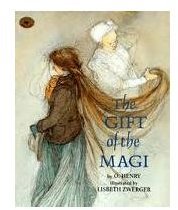Standards-Based Curriculum Map: Freshman English Syllabus: A Curriculum Guide for Language Arts
Your Map: A Curriculum Guide
Attention Freshman English Teachers: This is your lucky day. You have come across a curriculum guide for language arts that will help
you plan the entire first semester. There are links to help you teach every unit in my Freshman English syllabus.
There is one problem, however, with standards-based curriculum maps. What standards are being used? This particular curriculum guide for language arts is based on Nevada’s because that’s where I teach. Although you may not teach in Nevada, these standards should cover about 90 percent of what you need to teach regardless of your state.
First Quarter Standards
The following first quarter standards and objectives should be interspersed throughout the year.
- Apply knowledge of context clues to comprehend new words in text: There are many ways to accomplish this standard. Most of them are boring. Here’s a great context clues lesson plan that can be used in concert with a piece of literature. It may also help to explain what context clues are.
- Apply knowledge of Greek and Latin roots and affixes to determine word meaning
- Analyze character, plot, setting, theme, and point of view in any piece of literature.
- Make supported inferences; make predictions about plot, setting, characters, and theme.
- Use textual evidence to analyze theme or meaning of a selection.
- Analyze how irony, tone, mood, syntax, language, and sounds are used rhetorically and aesthetically.
- Write narratives that reveal the writer’s attitude toward the subject.
- Recognize and use correct punctuation.
- Recognize and use correct capitalization.
- Demonstrate conventional spelling; recognize misspelled words.
- Write responses to literature analyzing imagery, theme, stylistic devices, and tone.
- Write summaries or abstracts distilling large amounts of information into concise prose.
Important First Quarter Assignments

Writing Assignments:
- Timed Writing: Short Story Literary Analysis (50 pts.)
- Timed Writing: Short Story Literary Analysis (50 pts.)
- Great Depression Narrative: Rough Draft/Revision/Turnitin.com (40 / 60)
- Imagery Analysis: Rough Draft/Revision/Turnitin.com (25 / 75)
- Allegory Analysis: Rough Draft / Revision / Turnitin.com (20 / 80) (May go on 2nd quarter, if necessary)
- Outside Reading Essay (50)
Test/Quizzes Category Assignments (For obvious reasons I cannot put my tests online for my students to see):
- Short Story Unit Test (100 pts.)
- Of Mice and Men Unit Test (100 pts)
- Outside Reading Test (100 pts.)
- Literary Terms Quiz (40 pts.)
- Vocab quizzes 1-4 (40 pts.)
- Roots quizzes 1-3 (40 pts.)
The following standards are not specifically covered below, but are covered in writing assignments:
- Recognize and use correct punctuation (contains links to several punctuation lesson plans).
- Recognize and use correct capitalization.
- Demonstrate conventional spelling; recognize misspelled words
Freshman English Syllabus: First Quarter

This syllabus is intended for honors-level students. Most assignments can be modified for use by all students. Many of the lesson plan links are suitable for students of all levels. Modify accordingly. Standards practiced or tested are in parentheses.
Week 1: Mostly administrative fluff.
Week 2:
- Literary Terms Powerpoint: Use Cornell Notes (12)
- Begin Short Story Unit (3-6)
- If you prefer teaching short stories with a focus on literary elements, try these(3-6)
- Vocabulary #1
Week 3:
- Continue Short Story Unit (see links above).
- Write a literary analysis of any short story (use a question that involves analysis and theme and using evidence) (3,5,6,8-11)
- Go over thesis statements and topic sentences.
- Lit terms quiz (3-6)
- Roots #1 (1-2)
Week 4:
- Continue Short Story Unit
- vocab #2 (1)
- Literary analysis #2 of any short story (3,5,6,8-11)
- Outside Reading Book: <em>A Separate Peace</em> (3,6)
Week 5
- Short Story Unit Test (sorry, you’ll have to make your own) (3-6)
- Begin <em>Of Mice and Men</em> (Here’s a link to lesson plans that include analyzing plot, allegory, imagery, and the novel’s title. It also includes a sample letter to send home to parents before reading the novel in class) with an <em>Of Mice and Men</em> PowerPoint. (12)
- Great Depression Narrative (lesson plan coming soon) (7-11)
- Read chapter 1 of <em>Of Mice and Men</em> (link contains OMM study guide). (3-6)
- roots #2 (1,2)
Week 6:
- Of Mice and Men, chapters 2 and 3 (3-6)
- Great Depression Narrative due (7-11)
- Complete Characterization Chart (After chapter 2) (3-6)
- Vocab #3 (1)
Week 7:
- Read Of Mice and Men chapter 4 (3-6)
- Assign Imagery Analysis (Due next week). Here’s a handout to make your life easier. (This assignment might be a little much for non-honors students). (3-11)
- Read OMM chapters 5 and 6 (3-6)
- Roots #3 (1,2)
Week 8:
- Finish Of Mice and Men (3-6)
- Circular Plot Analysis of <em>OMM</em> (3-6)
- Imagery Analysis Due (3-6, 8-11)
- Assign Allegory Analysis (This assignment might be a little much for non-honors students). (3-6, 8-11)
- Outside Reading Test (My choice is A Separate Peace. You choose what you wish.). (3-6, 8-11)
- Vocab #4 (1)
Week 9
- Allegory Analysis due
- Of Mice and Men Test
- Catch up, if necessary.
Freshman English Syllabus: Second Quarter Standards

- Discern subtle differences between closely related words; use references.
- Locate essential information, make and verify predictions, draw conclusions, and make inferences in literary, informational, and functional text.
- Understand stated information and identify the literal meaning of words or phrases.
- Apply information; interpret non-literal language.
- Analyze use of text features and rhetorical strategies in primary source documents (policy statements, speeches, debates).
- Locate and synthesize multiple primary and secondary sources to support positions.
- Critique the power, logic, and appeal of arguments advanced in texts.
- Identify the main idea and major points; make generalizations.
- Identify author’s purpose or viewpoint, fact vs. opinion, assumptions, or conclusions.
- Write reflective texts that compare specific incidents and broader themes.
- Organize ideas through cause/effect or comparison/contrast to enhance central theme.
- Write compositions that present complex ideas in a compelling manner.
- Revise writing to improve word choice, organization, and point of view.
- Edit for use of standard English.
- Select and use logical or effective transitional, opening, and closing sentences.
- Evaluate relevance of content.
- Determine appropriate paragraphing.
- Recognize and use logical transitional words and phrases.
- Recognize and use appropriate diction.
- Select and use words and phrases that enhance clarity, conciseness, and consistency of style.
- Apply the rules of usage/grammar: recognize correct verb, pronoun, and modifier forms and usage; maintain grammatical agreement; recognize idiomatic usage.
- Justify a position using logic and refuting opposing viewpoints.
I’m going to throw in two very useful links: (1) How to Write a Thesis Statement; (2) How to Write a Topic Sentence
Major Second Quarter Assignments
Writing Assignments:
- Timed Writing: Act I Character Analysis (50 pts.)
- Dialectical Journals 1 + 2 (60 pts.)
- Dialectical Journals 3 + 4 (60 pts.)
- Dialectical Journals 5 + 6 (60 pts.)
- Blame Game Essay (100 pts.)
- “On Winter” Essay (60)
Test/Quizzes Category Assignments (For obvious reasons I cannot put my tests online for my students to see):
- Romeo and Juliet Quizzes (30 pts. each)
- Romeo and Juliet Unit Test (100 pts.)
- Outside Reading Test (100 pts.)
- Vocab quizzes 1-4 (40 pts.)
- Roots quizzes 1-3 (40 pts.)
Second Quarter Syllabus
This curriculum guide contains the number of the standards (listed above) that should be practiced or mastered by the student.
Week 1
- Begin <em>Romeo and Juliet</em> Unit
- Shakespeare and Romeo and Juliet Notes. I prefer Cornell Notes. (4,8,16)
- Read and discuss <em>Romeo and Juliet</em> Prologue. (2,3,4,9)
- Write a sonnet. (4,13,14,19,20)
- Assign outside reading (Teacher’s choice).
- Roots Quiz (1,3)
Week 2
- Read Romeo and Juliet, Act I (2,4,8)
- Complete <em>Romeo and Juliet</em> character chart.
- Write an Act I character analysis (11-22)
- Vocabulary quiz. (1,3)
Week 3
- Finish Romeo and Juliet, Act I and read Act 2 (2,4,8)
- Act I quiz. (2,4,8)
- Dialectical Journals (Lesson Plan coming soon) (11-22) - Give these out in three sets of two passages each, due 1 week apart. Spend two days explaining this and writing a practice one.
- Roots Quiz (1,3)
Week 4
- Act 2 quiz. (2,4,8)
- Read Act 3 (2,4,8)
- Passage Analysis Chart for Act III (Here’s an actual chart with additional quotes to help)
- Roots Quiz (1,3)
- Dialectical Journals 1 and 2 due.
Week 5
- Act 3 Quiz
- Read Acts 4 and 5.
- Play the Blame Game. (2,8,9,11,16,22)
- Vocabulary Quiz (1,3)
- Dialectical Journals 3 and 4 due.
Week 6
- Quiz over Acts 4 and 5.
- Review characters with this fun review lesson plan. (2,9)
- Assign essay assigning blame to each character. (11-22)
- <em>Romeo and Juliet</em> Test.
- Dialectical Journals 5 and 6 due.
Weeks 7-8
- Non Fiction Reading. What you choose depends on what yout textbook has. Selections should include speeches, debates, policy, and reflexive writing. Assignments should incorporate standards 2,5,6,7 above. Here are some possible non fiction works to use
- Martin Luther King’s “I Have a Dream” Speech
- John F. Kennedy’s “Man on the Moon” Speech
- “On Summer” by Lorraine Hansberry (This would make a good reflexive essay assignment: Have students write a reflexive essay called “On Winter.”)
- “A Christmas Memory” by Truman Capote
- “A Child’s Christmas in Wales” by Dylan Thomas
Week 9
- Outside Reading Test
- Review for Semester Exams
Additional Teaching Ideas for 2nd Quarter

I’m goint to throw in some additional links to appropriate holiday related lesson plans:
